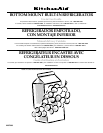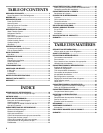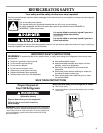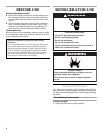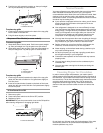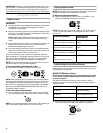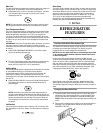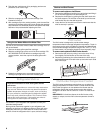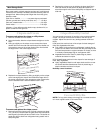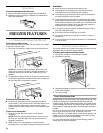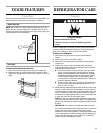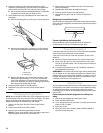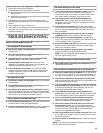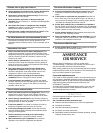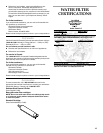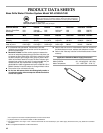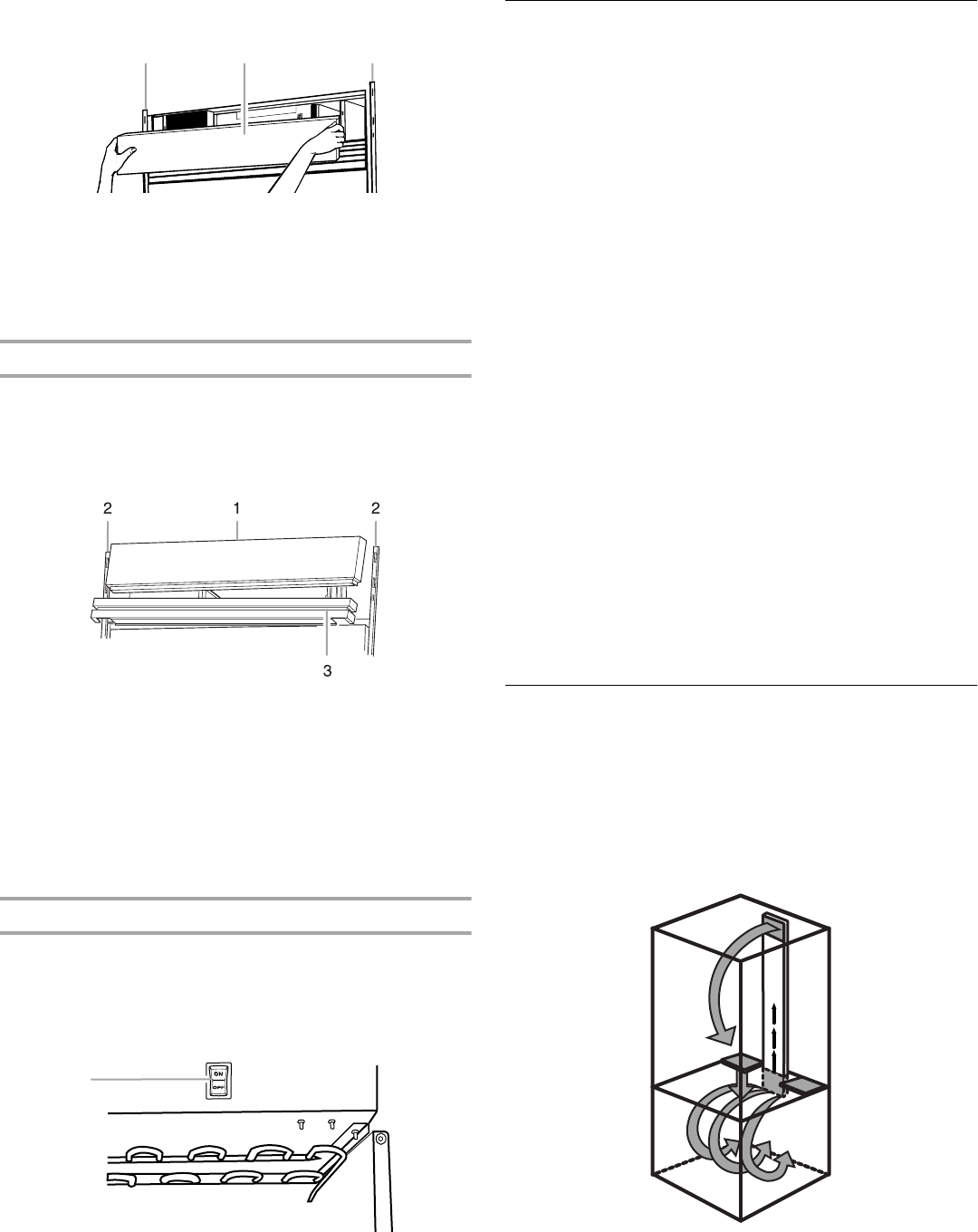
5
2. Push the top grille assembly straight up, then pull straight
out. Lay the assembly on a soft surface.
To replace top grille:
1. Insert top grille hooks (located on the back of the top grille)
into the slots on the side trim.
2. Pull grille down slightly to lock into place.
Wraparound Door Models (on some models)
To remove top grille:
1. Grasp both ends of louver panel. Push louver panel straight
up, then pull straight out. Lay the panel on a soft surface.
2. Grasp both ends of the top grille. Push top grille straight up,
then pull straight out. Lay the top grille on a soft surface.
To replace top grille:
1. Insert top grille hooks (located on the back of the top grille
panel) into the slots on side trim. Pull grille down slightly to
lock into place.
2. Insert louver panel hooks (located on the back of the louver
panel) into the slots on the side trim. Pull panel down slightly
to lock into place.
To Turn Power On or Off:
1. Remove top grille.
2. Press main power switch to the ON or OFF position.
3. Replace top grille.
IMPORTANT: Be sure the power switch is set to the ON position
after cleaning refrigerator or changing light bulbs.
Normal Sounds
Your new refrigerator may make sounds that your old one didn’t
make. Because the sounds are new to you, you might be
concerned about them. Most of the new sounds are normal. Hard
surfaces, such as the floor, walls, and cabinets, can make the
sounds seem louder. The following describes the kinds of sounds
and what may be making them.
■
If your product is equipped with an ice maker, you will hear a
buzzing sound when the water valve opens to fill the ice
maker for each cycle.
■
Your refrigerator is designed to run more efficiently to keep
your food items at the desired temperatures and to minimize
energy usage. The high efficiency compressor and fans may
cause your refrigerator to run longer than your old one. You
may also hear a pulsating or high-pitched sound from the
compressor or fans adjusting to optimize performance.
■
You may hear the evaporator fan motor circulating air through
the refrigerator and freezer compartments. The fan speed
may increase as you open the doors or add warm food.
■ Rattling noises may come from the flow of refrigerant, the
water line, or items stored on top of the refrigerator.
■
Water dripping on the defrost heater during a defrost cycle
may cause a sizzling sound.
■ As each cycle ends, you may hear a gurgling sound due to
the refrigerant flowing in your refrigerator.
■ Contraction and expansion of the inside walls may cause a
popping noise.
■
You may hear air being forced over the condenser by the
condenser fan.
■ You may hear water running into the drain pan during the
defrost cycle.
Ensuring Proper Air Circulation
In order to ensure proper temperatures, you need to permit
airflow between the refrigerator and freezer sections. As shown in
the illustration, cool air enters the freezer section through vents in
the rear and top. The air flows forward through the freezer section
and recirculates under the freezer floor. Cool air enters the
refrigerator section through the top, flows down and across
shelves to the doors and recirculates to return air vents at the
bottom.
Do not block any of these vents with food packages. If the vents
are blocked, airflow will be prevented and temperature and
moisture problems may occur.
1. Top grille
2. Cabinet side trims
1. Top grille
2. Cabinet side trim
3. Louver panel
1. Power On/Off switch
2 21
1



